 As the nation marveled over a rare magnitude 5.2 earthquake that startled Illinois residents early this morning, earthquake experts weren't all that surprised by the temblor, they told ABCNEWS.com. The earthquake struck southern Illinois about six miles north of Mount Carmel, at 4:45 a.m., violently shaking people from their beds, swaying Chicago skyscrapers and vibrating the earth as far east as Georgia.As the morning wore on, at least two significant aftershocks rocked the Midwest.Astonished messages from Midwesterners flew across sites such as Twitter.com about the aftershocks seconds after they were felt, even before the U.S. Geological Survey reported them.Scientists say the earthquake likely took place on the Wabash Valley fault system, which is in the southern parts of Illinois and Indiana and is near but not related to the larger and more volatile New Madrid fault, which extends farther south.Although today's quake was felt hundreds of miles away, so far no injuries or major damage were reported. Despite the nation's shock at the quake, according to experts the Midwest has long been a hotbed of seismic activity."Southern Illinois has had earthquakes of this size throughout history," said Nano Seeber, a senior research scientist at the Lamont-Doherty Earth Observatory at Columbia University. "Is this an earthquake zone? Yes."The first reported earthquake in Illinois was in 1795. The largest one, in 1909, was felt over 500,000 square miles and extended to Wisconsin and Iowa."This event is not unusual, speaking in geologic time," said Gary Patterson of the Center for Earthquake Research and Information at the University of Memphis, which is located on the New Madrid fault.A 1968 Southern Illinois earthquake that measured a magnitude 5.2 "did some damage that was very similar in this earthquake today," he said.The most recent earthquake of this size happened in 2002. It measured 5.0 and occurred in the same general area, according to Waverly Person, a geophysicist at the National Earthquake Center."It wasn't a surprise to me at all," Person said. "To the residents, they're surprised. Earthquakes are not that frequent. You forget from one to another."Although California quakes get the most news coverage, earthquake zones spread across the nation. The geological survey has designated 26 urban areas in the United States as earthquake risk areas; that list includes New York, Boston, Memphis, Chattanooga, Tenn., and Evansville, Ind.Unlike California quakes, however, today's temblor was felt hundreds of miles away, as far south as Memphis and as far east as Asheville, N.C. That's because of the particular geography of the Midwestern United States. "This was typical of earthquakes east of the Rocky Mountains. All of the earthquakes are felt over very, very wide areas. This is no different," Person said.While the crust of the earth in the western United States is full of fractures, there is less geological activity in the Midwest and the Eastern landscape.The soil there is stronger, more continuous, which means that seismic waves-uninterrupted by fractures-can travel much farther and why people in Georgia felt the morning's quakes, according to Seeber. The geology, therefore, also makes the Midwest and the East more vulnerable."It's well-known the same size earthquake can do a lot more damage in the eastern U.S., where there's not geologic activity," Seeber said. "In the eastern U.S.,the rocks are stronger.The waves go through and go for a longer distance."Although the quake was felt far, it didn't cause a lot of damage. The reason, according to Seeber, is that it occurred deep in the earth and not close to the crust. The shallower the quake, according to Seeber, the more havoc it wreaks.In Champaign-Urbana, Ill., Amar Elnashai, the director of the Mid-America Earthquake Center, was literally shaken out of bed this morning."The whole city is rather tense," Elnashai said after briefing the Federal Emergency Management Agency on the quake.Like other experts, Elnashai was not surprised by the quake. The center has spent the last three years researching what kind of structural damage an earthquake could do in a region that, unlike California, doesn't have earthquake codes for its buildings."Our structures have not been designed for earthquakes ever in the East," he said.Elnashai says that existing buildings in the Midwestern and Eastern United States should be reinforced. As for the public, he encourages citizens to find out whether they live in an earthquake zone and be prepared.Even for those currently living in an earthquake zone, scientists say there's no way to predict when or where an earthquake will strike."Prediction has a very specific meaning, which is telling you of an earthquake of a particular size, time and place. That's not possible," said Seeber. "What we do is give you the probability of an earthquake in an area based on the past. Then we design structures accordingly for cost."
As the nation marveled over a rare magnitude 5.2 earthquake that startled Illinois residents early this morning, earthquake experts weren't all that surprised by the temblor, they told ABCNEWS.com. The earthquake struck southern Illinois about six miles north of Mount Carmel, at 4:45 a.m., violently shaking people from their beds, swaying Chicago skyscrapers and vibrating the earth as far east as Georgia.As the morning wore on, at least two significant aftershocks rocked the Midwest.Astonished messages from Midwesterners flew across sites such as Twitter.com about the aftershocks seconds after they were felt, even before the U.S. Geological Survey reported them.Scientists say the earthquake likely took place on the Wabash Valley fault system, which is in the southern parts of Illinois and Indiana and is near but not related to the larger and more volatile New Madrid fault, which extends farther south.Although today's quake was felt hundreds of miles away, so far no injuries or major damage were reported. Despite the nation's shock at the quake, according to experts the Midwest has long been a hotbed of seismic activity."Southern Illinois has had earthquakes of this size throughout history," said Nano Seeber, a senior research scientist at the Lamont-Doherty Earth Observatory at Columbia University. "Is this an earthquake zone? Yes."The first reported earthquake in Illinois was in 1795. The largest one, in 1909, was felt over 500,000 square miles and extended to Wisconsin and Iowa."This event is not unusual, speaking in geologic time," said Gary Patterson of the Center for Earthquake Research and Information at the University of Memphis, which is located on the New Madrid fault.A 1968 Southern Illinois earthquake that measured a magnitude 5.2 "did some damage that was very similar in this earthquake today," he said.The most recent earthquake of this size happened in 2002. It measured 5.0 and occurred in the same general area, according to Waverly Person, a geophysicist at the National Earthquake Center."It wasn't a surprise to me at all," Person said. "To the residents, they're surprised. Earthquakes are not that frequent. You forget from one to another."Although California quakes get the most news coverage, earthquake zones spread across the nation. The geological survey has designated 26 urban areas in the United States as earthquake risk areas; that list includes New York, Boston, Memphis, Chattanooga, Tenn., and Evansville, Ind.Unlike California quakes, however, today's temblor was felt hundreds of miles away, as far south as Memphis and as far east as Asheville, N.C. That's because of the particular geography of the Midwestern United States. "This was typical of earthquakes east of the Rocky Mountains. All of the earthquakes are felt over very, very wide areas. This is no different," Person said.While the crust of the earth in the western United States is full of fractures, there is less geological activity in the Midwest and the Eastern landscape.The soil there is stronger, more continuous, which means that seismic waves-uninterrupted by fractures-can travel much farther and why people in Georgia felt the morning's quakes, according to Seeber. The geology, therefore, also makes the Midwest and the East more vulnerable."It's well-known the same size earthquake can do a lot more damage in the eastern U.S., where there's not geologic activity," Seeber said. "In the eastern U.S.,the rocks are stronger.The waves go through and go for a longer distance."Although the quake was felt far, it didn't cause a lot of damage. The reason, according to Seeber, is that it occurred deep in the earth and not close to the crust. The shallower the quake, according to Seeber, the more havoc it wreaks.In Champaign-Urbana, Ill., Amar Elnashai, the director of the Mid-America Earthquake Center, was literally shaken out of bed this morning."The whole city is rather tense," Elnashai said after briefing the Federal Emergency Management Agency on the quake.Like other experts, Elnashai was not surprised by the quake. The center has spent the last three years researching what kind of structural damage an earthquake could do in a region that, unlike California, doesn't have earthquake codes for its buildings."Our structures have not been designed for earthquakes ever in the East," he said.Elnashai says that existing buildings in the Midwestern and Eastern United States should be reinforced. As for the public, he encourages citizens to find out whether they live in an earthquake zone and be prepared.Even for those currently living in an earthquake zone, scientists say there's no way to predict when or where an earthquake will strike."Prediction has a very specific meaning, which is telling you of an earthquake of a particular size, time and place. That's not possible," said Seeber. "What we do is give you the probability of an earthquake in an area based on the past. Then we design structures accordingly for cost."As in the days of Noah....

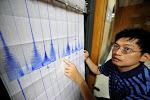
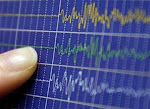
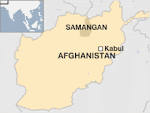






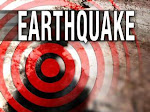
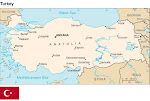
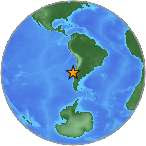




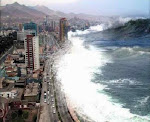

.jpg)


.bmp)
No comments:
Post a Comment